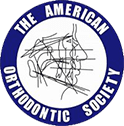Lufkin Dental Health and Wisdom Teeth Removal
Wisdom teeth are the third and final set of molars that most people get in their late teens or early twenties. Sometimes, these teeth can be a valuable asset to the mouth when healthy and properly aligned. More often, though, they are misaligned and require removal.
Wisdom teeth present potential problems when they are misaligned — they can position themselves horizontally, be angled toward or away from the second molar, or be angled inward or outward.
Poor alignment of wisdom teeth can crowd or damage adjacent teeth, the jawbone, or nerves. Wisdom teeth that lean toward the second molars, making those teeth more vulnerable to decay by entrapping plaque and debris. In addition, wisdom teeth can be entrapped completely within the soft tissue and/or the jawbone or only partially break through or erupt through the gum. Teeth that remain partially or completely entrapped within the soft tissue and/or the jawbone are termed “impacted.”
This results in pain, swelling, jaw stiffness, and general illness. Partially erupted teeth are also more prone to tooth decay and gum disease because their hard-to-reach location and awkward positioning makes brushing and flossing difficult.
Your East Texas dentist may take a periodic X-ray of your wisdom teeth to evaluate for presence and alignment. Your dentist may also decide to send you to an oral surgeon for further evaluation.
It may also be recommended that your wisdom teeth be extracted even before problems develop. This is done to avoid a more painful or more complicated extraction that might have to be done a few years later. Removal is easier in young people, when the wisdom teeth roots are not yet fully developed and the bone is less dense. In older people, recovery and healing time tend to be longer.







